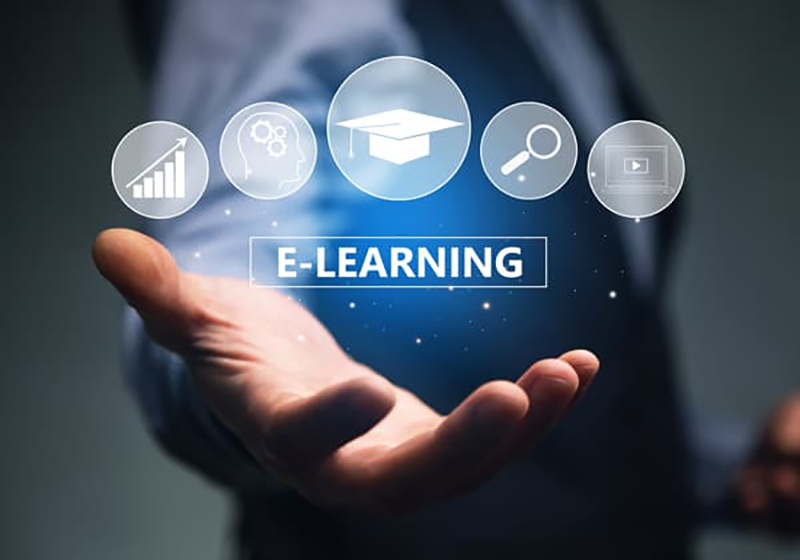E LEARNING

07 Jun 2021
In today's world, more and more people are taking online courses. This is because the internet is full of them. E-learning is when you take a class in an online setting. Furthermore, e-learning courses can come in many different forms and use many different technologies.
Multimedia learning, online education, web-based training, virtual education, and digital education are also some of the other names for this type of learning method. We've all heard these words before. Even though it is the "future of training," we also know that it is.
Safety and Health If students want to get their education or training, e-learning can help them do so more quickly and easily than if they were to learn in a classroom. This means that people can learn at any time of the day, when it's convenient for them. People who learn in a classroom or at their job can't match this. Students can also start a session on one device (like a smartphone on a train) and finish it on another device (such as a tablet at home in the evening).
Because health and safety isn't very important to people, we need to make it as easy as possible.
System for managing learning (LMS)
Learning Management System is a general term for a computer system that is used to manage online training courses, distribute course materials, and allow teachers and students to work together.
We have an LMS that lets you control everything about a course, from how many people sign up to where test results are kept. Because of this, you can accept assignments digitally and keep in touch with students. If you had a learning management system, it would make your life easier and make your class run more smoothly.
The LMS has some good things about it.
A lot of LMSs have a lot of different ways to customise the system so that you can make it work better for you. To make your LMS work how you want it to, you can change things like how notifications are sent, the language options, and other things. This is great because one LMS can be used by a lot of people, each with their own preferences.
Allows students to enrol online and keep track of their progress in the class, as well as how well they did on tests and exams. A debit card, credit card, or PayPal could also be used to pay for a course.
In a virtual classroom, the LMS may work with whiteboard systems and help students set up appointments for them. Using this app, they can invite people to class or send them reminders about them.
If you have an LMS, you can connect it to social media so that you can share your news items content on Facebook or Twitter with the click of a button.
Communicating with students: The LMS system must also be able to send out bulk emails to everyone on a certain course. Students can also set up automatic emails to send out when there is a virtual classroom session or a test coming up. This can help people know about these things. An LMS may also let you set up a chat room or a forum for students to use, so they can talk to each other.
Tests are an important part of online courses. Results from the tests will be stored in the reporting area of the LMS. Students can also set up a multiple choice test and choose how they want the results to be delivered. They can also see the results right away on the screen.
